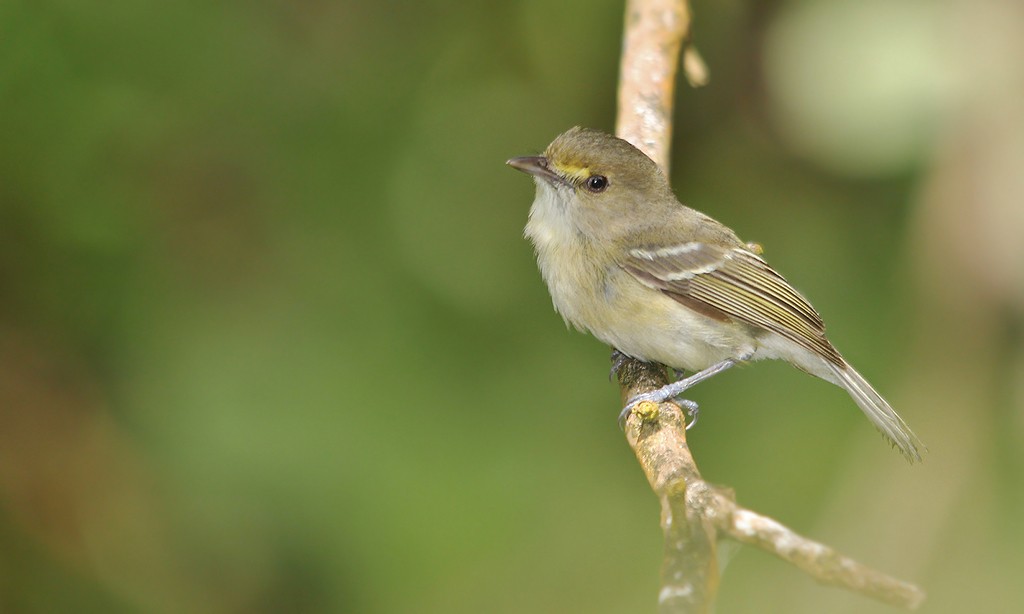San Andres Vireo
A species of Vireos Scientific name : Vireo caribaeus Genus : Vireos
San Andres Vireo, A species of Vireos
Botanical name: Vireo caribaeus
Genus: Vireos
Content
Description General Info
 Photo By adrianbraidotti , used under CC-BY-NC-4.0 /Cropped and compressed from original
Photo By adrianbraidotti , used under CC-BY-NC-4.0 /Cropped and compressed from original Description
It is a small bird, 12.5 cm in length. It is olive-green above and whitish or pale yellow below. It has two white bars on the wing, pale edges to the flight-feathers and a pale yellow stripe between the bill and eye. The eye is grey-brown. It has several songs and calls, producing a one-syllable chattering, a repeated two-syllable song and a three-syllable song. It is very similar to the mangrove vireo (V. pallens) and Jamaican vireo (V. modestus). It has a slightly thinner and darker bill than the mangrove vireo. Its bill is slightly longer and darker than that of the Jamaican vireo which also differs in having a whitish eye and fainter stripe between the bill and eye. 
Size
12 cm
Nest Placement
Tree
Feeding Habits
San Andres Vireo chiefly consumes insects, small arthropods, and larvae. It forages actively, often plucking food from foliage. San Andres Vireo also supplements its diet with fruits, showing adaptable feeding behaviors.
Habitat
The san Andres Vireo thrives in a variety of habitats ranging from dense forests and dry scrublands to mangroves. They are also known to inhabit live fences encircling agricultural plots and old coconut plantations with thick undergrowth. Generally avoiding dense urban settings, these birds primarily forage in lush vegetative areas close to the ground, up to heights of 15 meters.
Dite type
Insectivorous
General Info
Feeding Habits
Bird food type
Behavior
It feeds by gleaning caterpillars and other arthropods from vegetation. The breeding territory covers about 0.5 hectares and nesting has been recorded in June. The nest is built on or hanging from a branch in bushes or mangroves. Two lightly spotted eggs are laid. 
Distribution Area
It is restricted to the islands of St. Andrew (or San Andrés) and Providencia in the south-west Caribbean which belong to Colombia but is closer to Nicaragua. It occurs in a variety of habitats including woodland, cocoa plantations, scrubby pastures and mangrove swamps. It prefers vegetation with a dense understorey. It is most common in the less urbanized south of the island. The population has been estimated at between 8,200 and 14,000 individuals. The bird has a very small range and may be vulnerable to the effects of hurricanes. It is threatened by habitat loss as the island's population increases. However, it is tolerant of habitat degradation and is still one of the island's commonest birds. It is classified as Vulnerable by BirdLife International. 
Scientific Classification
Phylum
Chordates Class
Birds Order
Perching birds Family
Vireos Genus
Vireos Species
San Andres Vireo